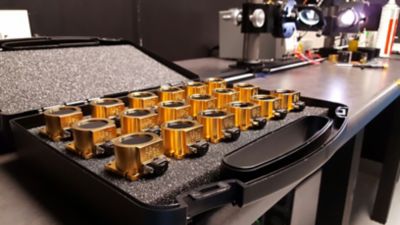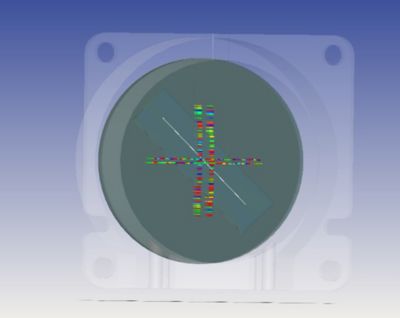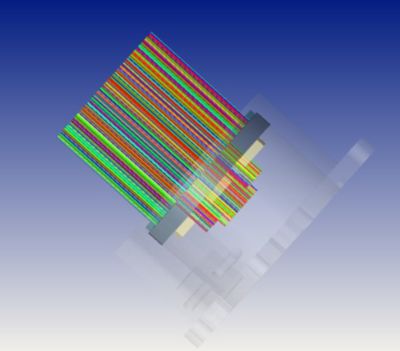Case Study
-
-
학생용 무료 소프트웨어에 액세스하기
차세대 엔지니어에게 힘을 실어주는 Ansys
학생들은 세계적 수준의 시뮬레이션 소프트웨어를 무료로 이용할 수 있습니다.
-
지금 바로 Ansys에 연결하십시오!
미래를 설계하기
시뮬레이션이 다음 혁신을 어떻게 지원할 수 있는지 알아보려면 Ansys와 연결하십시오.
국가
무료 트라이얼
제품 및 서비스
학습하기
회사 정보
Back
제품 및 서비스
“Ansys Zemax OpticStudio software turned a complex redesign into a precise and efficient process, ensuring accuracy without unnecessary overhauls.”
- Niké Ackerman, Design Engineer, NewSpace Systems
The Aquila D01 sun sensor from NewSpace Systems (NSS) is a proven and reliable system with extensive in-orbit heritage. It features a detector housed beneath a metal mask with precision-cut slits. As sunlight passes through these slits, it creates a unique one-dimensional brightness profile on the detector. This pattern is then analyzed to determine the sun's position. In 2022, the linear array used in the Aquila D01 was discontinued, prompting an effort to redesign the sun sensor to meet updated component availability.

Figure 1. NSS Aquila Sun Sensor at the calibration test setup
Challenges
The redesign led to the development of the Gen 1.5 Aquila sun sensor. NSS needed to integrate a new detector that would maintain the form fit and function of the original design, improve manufacturability, and avoid disruptions to existing embedded processing and calibration algorithms. A replacement detector was identified. However, due to differences in the photosensitive area of the detectors, the embedded algorithm and calibration were compromised, leading to reduced accuracy.

Figure 2. Simulation results showing the projected image pattern onto the detector

Figure 3. Simulation results from the ray tracing performed with Ansys Zemax OpticStudio software
Engineering Solutions
To minimize mechanical changes, NSS used Ansys Zemax OpticStudio optical system design and analysis software to simulate potential design modifications, identifying the simplest adjustments needed to achieve desired accuracy. Through this approach, they tested various iterations, including adjustments to the optical filter material, minor modifications in the detector's placement, and optimized component alignment. This simulation-based approach enabled NSS to quickly evaluate multiple configurations, ensuring the new sensor could meet precision requirements while enhancing manufacturability.
Benefits
By conducting these simulations early in the redesign, NSS streamlined the development process and mitigated costly adjustments down the line. Previously, only 13% of Gen 1 Aquila sensors achieved the desired accuracy of below 0.1°. With the Gen 1.5 redesign, all sensors now meet this stringent accuracy threshold, underscoring the value of early-stage simulation.
시작하기
엔지니어링 과제에 직면하고 있다면우리 팀이 도와드리겠습니다. 풍부한 경험과 혁신에 대한 헌신을 가지고 있는 우리에게 연락해 주십시오. 협력을 통해 엔지니어링 문제를 성장과 성공의 기회로 바꾸십시오. 지금 문의하기